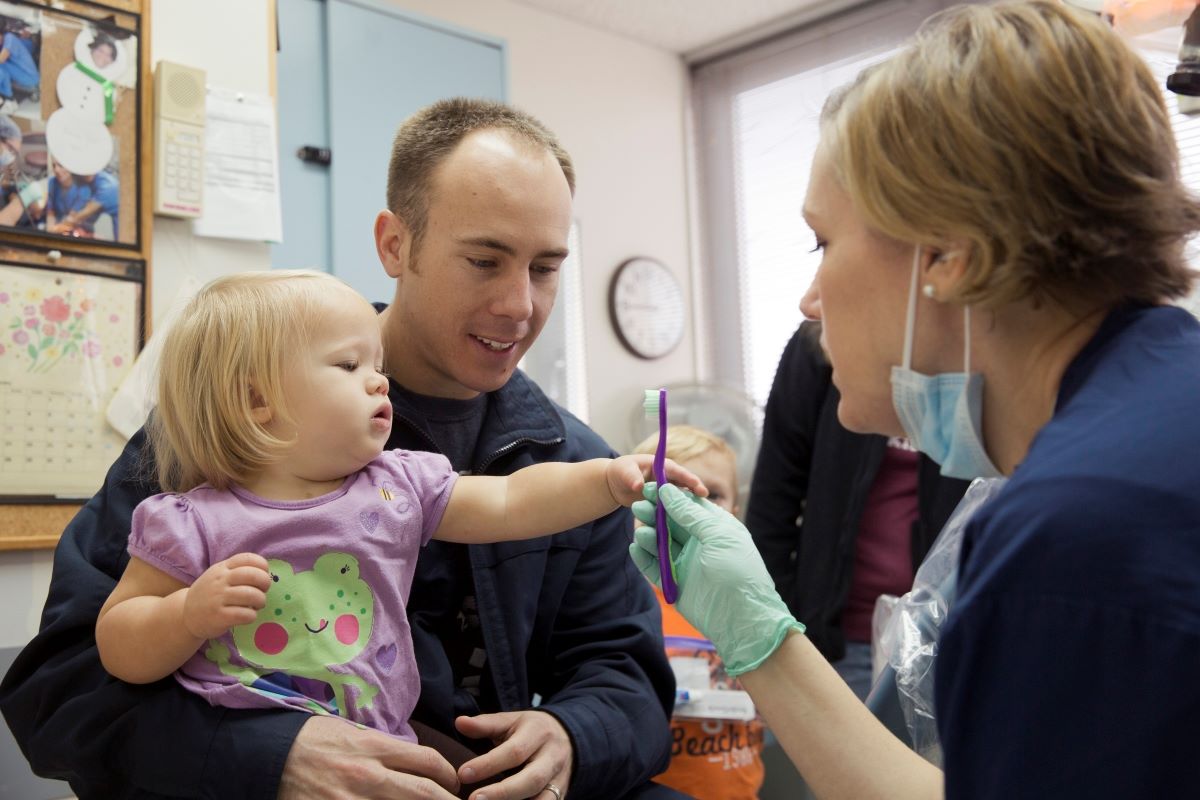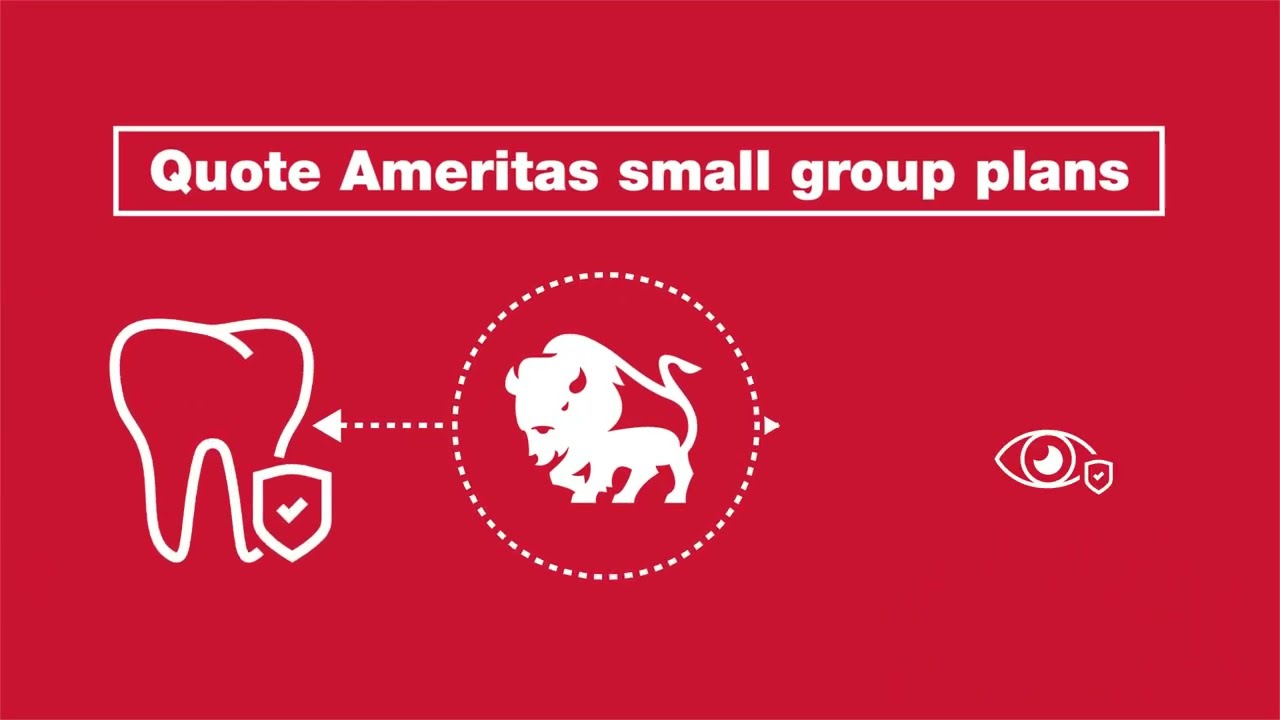Home>Finance>When To Add A Baby To Dental And Vision Insurance


Finance
When To Add A Baby To Dental And Vision Insurance
Modified: December 30, 2023
Learn when you should add your baby to your dental and vision insurance to ensure their health and save on financial costs.
(Many of the links in this article redirect to a specific reviewed product. Your purchase of these products through affiliate links helps to generate commission for LiveWell, at no extra cost. Learn more)
Table of Contents
Introduction
When it comes to ensuring the health and well-being of your family, dental and vision insurance play a crucial role. While many people understand the importance of having dental and vision coverage for themselves, they may overlook the need to add a baby to their insurance policy. In this article, we will explore why it’s essential to include a baby in your dental and vision insurance and when the right time to do so is.
Understanding Dental and Vision Insurance
Dental insurance covers a range of services, including preventive care like regular cleanings and check-ups, as well as restorative procedures like fillings and root canals. Vision insurance, on the other hand, helps cover the cost of eye exams, prescription glasses or contact lenses, and even corrective surgeries like LASIK.
Importance of Adding a Baby to Dental and Vision Insurance
Your baby’s oral health is just as important as their overall well-being. By adding your infant to your dental insurance, you can ensure that they receive the necessary dental care from an early age. Regular dental check-ups can help identify and address any potential issues early on, preventing more significant problems in the future.
Similarly, vision insurance for your baby is crucial. Regular eye exams can detect any vision problems, such as astigmatism or nearsightedness, that may need correction. Early interventions can help prevent long-term vision concerns and facilitate proper development.
Factors to Consider
When deciding to add a baby to your dental and vision insurance, there are a few factors to consider. Firstly, review the coverage options provided by your insurance plan. Some plans may already include child coverage, while others may require you to add your baby as a dependent. Additionally, take into account the cost of adding a baby to your policy and compare it with standalone plans specifically designed for infants.
Understanding Dental and Vision Insurance
Dental and vision insurance are two types of health insurance that focus on specific aspects of your healthcare needs – your dental health and your vision health, respectively. While they are often offered as separate insurance plans, some providers may offer them together as a package.
Dental insurance typically covers a range of services, including preventive care, such as regular cleanings and check-ups, as well as restorative procedures like fillings, root canals, and crowns. Some plans may also provide coverage for orthodontics, such as braces or retainers. The specifics of dental coverage can vary, so it’s important to carefully review your plan to understand what services are included, what the coverage limits are, and whether there are any waiting periods for certain procedures.
Vision insurance, on the other hand, is designed to help cover the cost of eye care and vision correction services. This can include regular eye exams, prescription glasses or contact lenses, and even corrective surgeries like LASIK. Vision insurance plans may also offer discounts on frames, lenses, or other vision-related products. Like dental insurance, the coverage and benefits provided can vary, so it’s important to review your plan details.
It’s worth noting that dental and vision insurance are often considered supplemental coverage rather than comprehensive health insurance. While they focus on specific areas of your health, they do not typically cover other medical or hospital-related expenses. As such, it’s important to have comprehensive health insurance coverage in addition to dental and vision insurance to ensure you have the necessary coverage for all your healthcare needs.
Many employers offer dental and vision insurance as part of their employee benefits package. However, if your employer does not provide these benefits or if you are self-employed, you can also explore individual dental and vision insurance plans. These plans can be tailored to your specific needs and offer various coverage options to choose from.
When considering dental and vision insurance, it’s important to assess your own dental and vision health needs, as well as those of your family members. Take into account factors such as existing dental or vision concerns, the frequency of visits to dental and eye care professionals, and any specific treatments or procedures that may be required. Choosing the right dental and vision insurance plans can provide you with the peace of mind that you and your family will have access to necessary dental and vision care when needed.
Importance of Adding a Baby to Dental and Vision Insurance
Your baby’s health and well-being are of utmost importance, and this includes their dental and vision health. While it may be tempting to assume that infants don’t require dental or vision care, it is essential to include them in your dental and vision insurance coverage from an early age. Here are some reasons why:
Early Detection of Issues: By adding your baby to your dental and vision insurance, you can ensure that their oral and vision health is monitored closely. Regular dental check-ups can help identify any potential dental issues, such as tooth decay, gum problems, or misalignment, even before visible symptoms appear. Similarly, routine eye exams can detect vision problems, such as refractive errors or eye conditions, that may hinder your baby’s visual development.
Preventive Care: Adding your baby to dental and vision insurance allows you to provide them with essential preventive care. Early dental interventions, such as fluoride treatments and sealants, can help protect their developing teeth. Regular cleanings and check-ups can also establish good oral hygiene habits from an early age. Similarly, vision screenings and eye exams can catch any vision issues early on, allowing for timely interventions and appropriate corrective measures.
Proactive Maintenance: Dental and vision insurance for your baby encourages regular maintenance and proactive care. By having coverage in place, you are more likely to prioritize routine visits to the dentist and eye doctor, ensuring that your baby receives consistent care. This proactive approach can help prevent minor issues from turning into major problems and ultimately save you from costly dental or vision treatments down the line.
Peace of Mind: Adding your baby to dental and vision insurance provides peace of mind for parents. Knowing that your little one’s oral and vision health is taken care of can alleviate concerns and allow you to focus on their overall well-being. It’s reassuring to have the financial support of insurance coverage, knowing that you won’t have to bear the full cost of treatments or procedures that may be required.
Continuity of Care: When your baby is added to your dental and vision insurance, it ensures continuity of care as they grow older. This means that they can continue receiving care from the same dentist and eye doctor who are already familiar with their health history and specific needs. This seamless transition promotes a sense of trust and comfort for both you and your baby.
Overall, adding your baby to dental and vision insurance is a proactive step towards safeguarding their health and well-being. It allows for early detection and prevention of dental and vision issues, encourages regular maintenance and care, and provides peace of mind for parents. By prioritizing their dental and vision health from the start, you are setting a strong foundation for their lifelong well-being.
Factors to Consider
When deciding to add your baby to dental and vision insurance, there are several factors to consider. Taking these into account can help you make an informed decision and select the best insurance option for your family’s needs. Here are some key factors to consider:
Existing Coverage: Start by reviewing your current dental and vision insurance plans. Check if your existing policy already includes coverage for dependents, including infants. Some plans automatically provide coverage for newborns, while others may require you to add them as dependents separately. Understanding your plan’s coverage provisions will give you a clearer picture of the steps you need to take.
Cost: Evaluate the cost implications of adding your baby to dental and vision insurance. Consider the additional premium, if any, that you will need to pay. Compare different insurance plans and their costs to determine which option provides the most value for your family.
Specific Coverage: Examine the specific dental and vision services covered by your insurance plan. Different plans may have varying degrees of coverage for preventive care, restorative procedures, and vision-related services. Ensure that the plan you choose adequately covers the necessary dental and vision care your baby may require.
Deductibles and Copayments: It’s crucial to understand the deductibles and copayments associated with your dental and vision insurance. Deductibles are the amount you must pay out of pocket before insurance coverage kicks in, while copayments are fixed amounts you pay for specific services. Knowing these costs can help you estimate the potential expenses associated with your baby’s dental and vision care.
Provider Network: Check if the dental and vision insurance plans you are considering have a network of providers near your location. Having access to a network of dentists and eye doctors in close proximity can make it more convenient for you to schedule appointments and receive care for your baby.
Annual Limits: Some dental and vision insurance plans have annual limits on coverage. These limits define the maximum amount the insurance will pay for certain services within a given year. Understanding these limits is important to gauge if the coverage provided aligns with your baby’s potential dental and vision care needs.
Standalone Plans: Consider standalone dental and vision insurance plans specifically designed for infants. These plans may have comprehensive coverage tailored to meet the unique needs of babies and young children. Compare the benefits, coverage, and cost of standalone plans with adding your baby to an existing family plan to determine which option suits your family best.
By carefully evaluating these factors, you can make an informed decision about adding your baby to dental and vision insurance. Remember that every family’s situation is unique, so it’s important to assess your needs and priorities to select the most appropriate insurance option for your little one’s dental and vision care.
When to Add a Baby to Dental and Vision Insurance
Choosing the right time to add your baby to your dental and vision insurance is crucial to ensure their health needs are covered from the start. While it may vary depending on your specific insurance plan, here are some general guidelines:
Dental Insurance: Most dental insurance plans recommend adding your baby to the policy within 30 days of their birth. This early enrollment allows for immediate coverage of any necessary dental care. However, it’s important to check with your insurance provider for their specific guidelines and requirements.
Vision Insurance: When it comes to vision insurance, the American Optometric Association recommends scheduling your baby’s first comprehensive eye exam between 6 and 12 months of age. This is an ideal time to add your baby to your vision insurance policy to ensure coverage for the exam and any potential vision correction needs.
It’s important to note that these timelines may vary depending on the insurance provider and the specific terms of your policy. Some insurance plans may have their own enrollment periods or guidelines, so it’s essential to review the documentation provided by your insurance provider or contact them directly for accurate information.
If you missed the initial enrollment period or the recommended timeframe, don’t worry — you can still add your baby to your dental and vision insurance outside of the designated window. However, it’s advisable to do so as soon as possible to ensure that your baby’s dental and vision needs are covered and to avoid any potential delays in accessing necessary care.
In some cases, you may have a life event, such as a change in employment or a qualifying event, which allows you to make changes to your insurance coverage outside of the standard enrollment periods. Examples of qualifying events can include the birth of a child, marriage, or adoption. In these situations, you may have a specific timeframe to add your baby to your dental and vision insurance without waiting for the next enrollment period.
Remember, the key is to be proactive and ensure that your baby’s dental and vision health needs are adequately covered. By adding them to your insurance policy as early as possible, you can provide them with the necessary care and peace of mind knowing that their health is taken care of.
Benefits of Early Enrollment
Enrolling your baby in dental and vision insurance as early as possible offers several key benefits that can positively impact their health and well-being. Here are some advantages of early enrollment:
Timely Access to Care: By enrolling your baby in dental and vision insurance early on, you ensure they have immediate access to necessary healthcare services. Regular dental check-ups and eye exams can detect any potential issues and allow for timely interventions, preventing the progression of dental or vision problems.
Preventive Approach: Early enrollment encourages a preventive approach to dental and vision care. Regular visits to the dentist and eye doctor establish a routine of preventive treatments and screenings, helping to prevent or minimize the risk of more serious dental and vision problems in the future.
Educational Resources: Dental and vision insurance providers often offer educational resources and guidance for parents. By enrolling your baby early, you can take advantage of these resources, learning about proper oral hygiene practices, age-appropriate dental and vision care, and ways to promote healthy habits for your little one.
Financial Assistance: Dental and vision treatments for infants can be costly, especially if long-term care or specialized procedures are required. Early enrollment provides financial assistance in the form of insurance coverage, reducing the out-of-pocket expenses associated with comprehensive dental and vision care.
Continuity of Care: Enrolling your baby early in dental and vision insurance ensures continuity of care as they grow older. This allows them to establish a relationship with their dentist and eye doctor from an early age, leading to a higher level of comfort and familiarity during future visits.
Establishing Healthy Habits: Early enrollment in dental and vision insurance sets the foundation for a lifetime of good oral and vision health habits. By incorporating regular check-ups and treatments into your child’s routine from the start, you instill the importance of preventive care and promote a positive attitude towards dental and vision maintenance.
Peace of Mind: Perhaps the most significant benefit of early enrollment is the peace of mind it provides to parents. Knowing that your baby’s dental and vision health needs are covered by insurance allows you to focus on their overall well-being without the worry of unexpected expenses or delayed access to necessary care.
Overall, early enrollment in dental and vision insurance for your baby offers numerous advantages. It ensures timely access to care, promotes preventive treatments, provides educational resources, offers financial assistance, establishes continuity of care, empowers healthy habits, and brings peace of mind to parents. By enrolling your baby early, you are investing in their long-term dental and vision health and setting them up for a lifetime of well-being.
How to Add a Baby to Dental and Vision Insurance
Adding your baby to your dental and vision insurance is a straightforward process that can typically be done by following these steps:
Step 1: Review Your Policy: Start by reviewing your current dental and vision insurance policy. Check if it already includes coverage for dependents, including infants. Understand the terms and conditions of your policy to determine the requirements and procedures for adding a baby.
Step 2: Contact Your Insurance Provider: Reach out to your insurance provider directly to inquire about the process of adding your baby to your policy. This can usually be done through the customer service department or by visiting the provider’s website. They will guide you through the necessary steps and provide any required forms or documentation.
Step 3: Gather Essential Information: Prepare the necessary information and documentation to add your baby to the insurance policy. This may include your baby’s full name, date of birth, social security number, and any other information required by your insurance provider.
Step 4: Complete Enrollment Forms: Fill out the enrollment forms provided by your insurance provider. These forms will typically ask for the required information about your baby and may also require your signature as the policyholder.
Step 5: Submit Forms and Documentation: Submit the completed enrollment forms and any other required documentation to your insurance provider. This can be done electronically or through the mail, depending on the guidelines provided by your insurance company.
Step 6: Verify Enrollment: Once you have submitted the necessary forms and documentation, follow up with your insurance provider to confirm that your baby has been successfully added to the policy. This ensures that their dental and vision care will be covered moving forward.
Step 7: Understand Coverage Details: Familiarize yourself with the coverage details for your baby within your dental and vision insurance policy. Be aware of the specific services covered, any limitations, deductibles, copayments, and annual limits that may apply.
Remember, the process of adding a baby to dental and vision insurance may vary depending on your specific insurance provider and policy. It’s important to reach out to your insurance company directly for accurate and up-to-date information regarding the enrollment process.
By taking the necessary steps to add your baby to dental and vision insurance, you ensure that they receive the vital dental and vision care they need from an early age. This gives you peace of mind knowing that their oral and visual health is protected, allowing them to grow up with a strong foundation of overall well-being.
Conclusion
Adding a baby to your dental and vision insurance is a crucial step in ensuring their overall health and well-being from an early age. By including them in your policy, you provide them with access to essential dental and vision care, early detection of issues, and preventive treatments. It also establishes a foundation for a lifetime of good oral and visual health.
When considering adding a baby to your dental and vision insurance, it’s important to review your existing coverage, understand the costs and specific services covered, and consider standalone plans designed for infants. Additionally, enrolling your baby early offers numerous benefits, including timely access to care, a preventive approach, educational resources, financial assistance, continuity of care, the establishment of healthy habits, and peace of mind for parents.
To add your baby to your dental and vision insurance, follow the steps outlined by your insurance provider, which typically involve reviewing your policy, contacting your insurer, completing enrollment forms, and submitting the necessary documentation. By doing so, you can ensure that your baby’s dental and vision health needs are covered and that they receive the care they require.
In conclusion, prioritizing dental and vision insurance for your baby is an important step in their overall health and well-being. By taking early action, you can pave the way for a lifetime of healthy smiles and clear vision, setting your baby up for a bright and healthy future.














